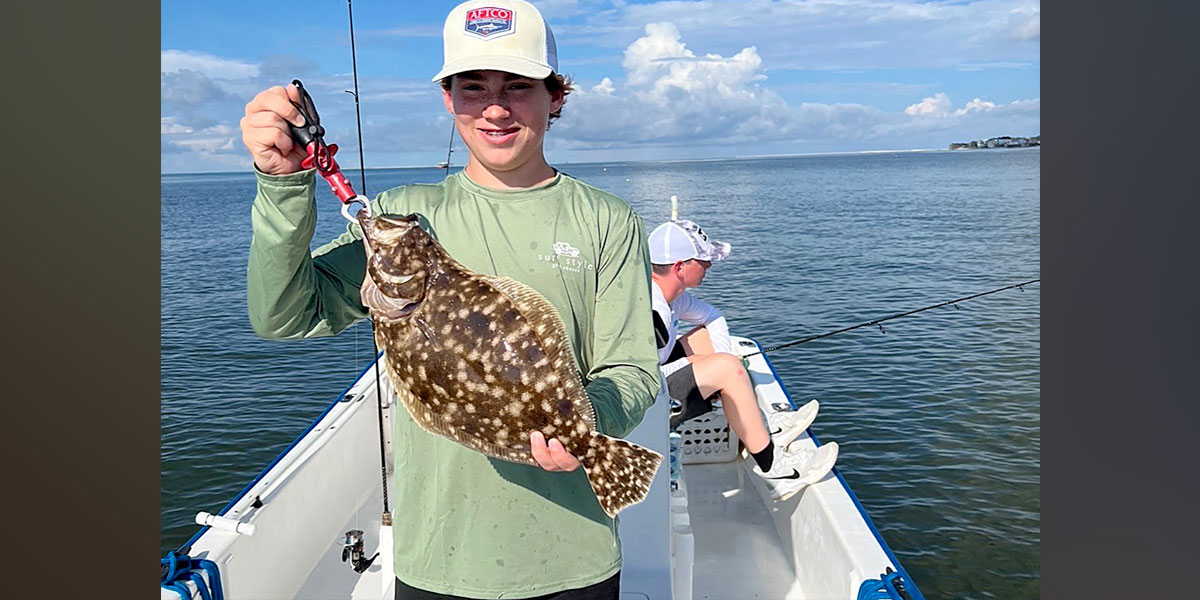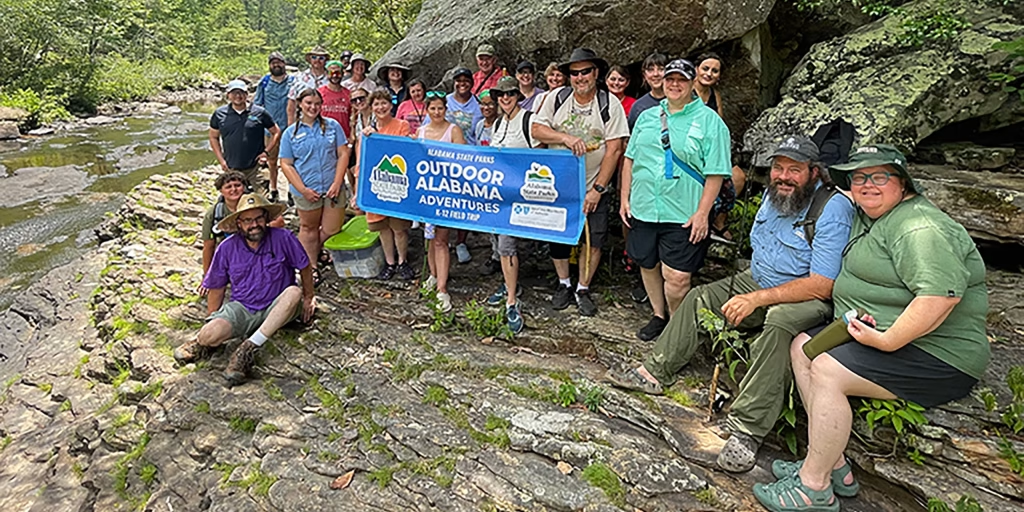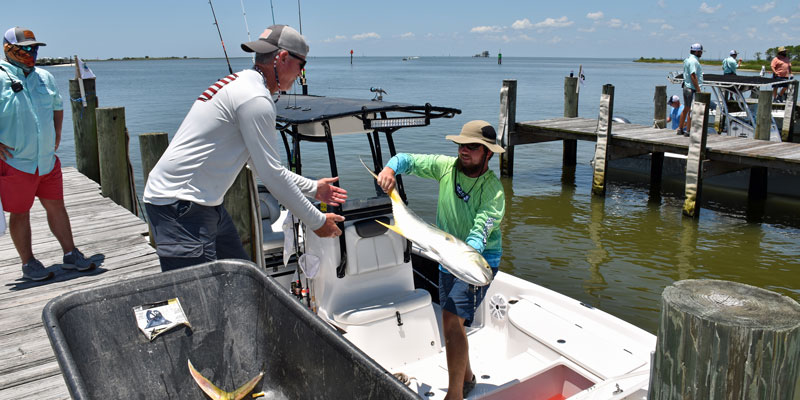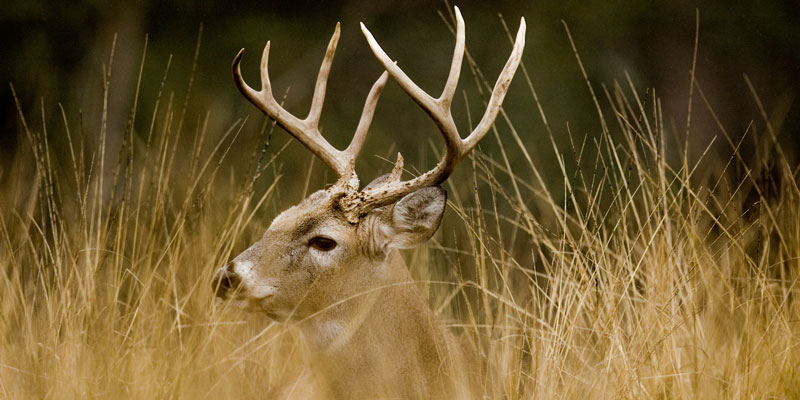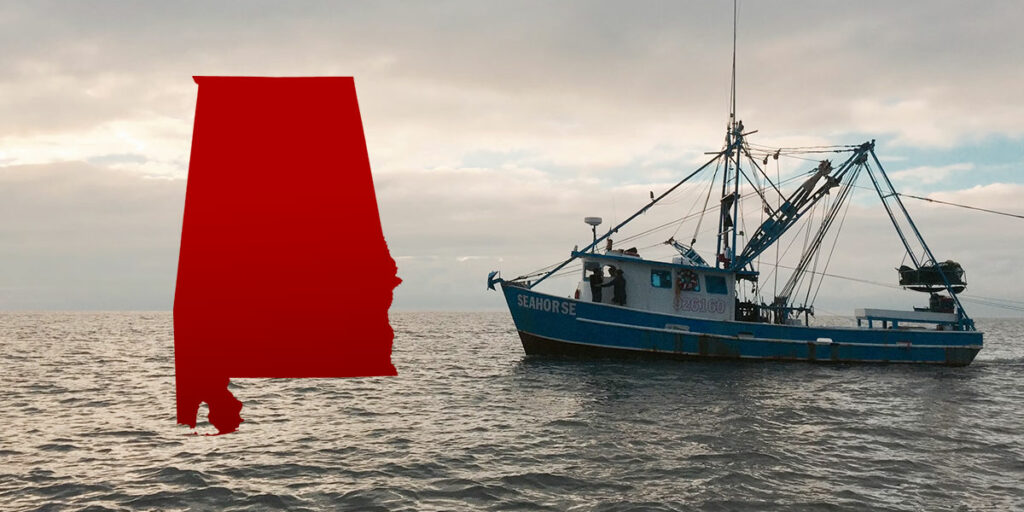Whether it was regulation changes or better environmental conditions, the apparent rebound in the flounder population has everyone involved with the fishery along the Alabama Gulf Coast encouraged.
Scott Bannon, director of the Marine Resources Division (MRD) of the Alabama Department of Conservation and Natural Resources (ADCNR), said the division adopted stricter limits several years ago because of a decline in the flounder population.
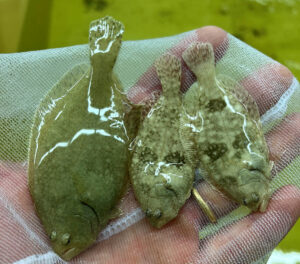
“We made regulation changes in 2019,” Bannon said. “It created a commercial trip limit, which would include hook and line, gig and gill net, of 40 fish per trip. We reduced the recreational bag limit to 5 fish and increased the minimum size to 14 inches. And we created a 30-day no-fishing period for the month of November, when flounder spawn, for commercial and recreational anglers.
“We had concerns, not only in Alabama but across other Gulf states, with what we were seeing with flounder.”
Bannon said social media is his “easy barometer” to assess what’s going on in the fishery, and the number of flounder seen lately has significantly increased.
“You don’t post what you don’t catch,” he said. “I have seen an increase in photos of flounder on several social media sites and fishing forums. I’ve received phone calls from anglers who target flounder, and they feel like they are seeing increased opportunities to catch flounder. I’ve even spoken to a couple of divers who have seen more in places like Perdido Pass. They are seeing them on the bottom in numbers that they haven’t seen in the past few years. We also hear from some of the commercial anglers that they are starting to see more in their trips as well. Flounder is a very popular species. People are very happy to be catching them again.
“That’s not scientific, but that’s what the public is telling us. And that is important because we need people to feel comfortable that when we make management decisions that there is a positive impact.”
Bannon doesn’t think the credit for the flounder rebound should go completely to the regulation changes.
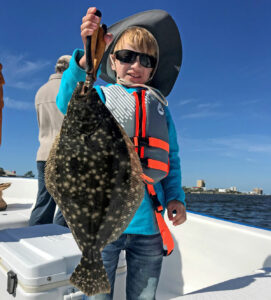
“I think there are potential benefits of making the regulatory changes, but I also think there may be some environmental changes,” he said. “Flounder is one those fish that we like to try to find in the same areas over and over again. But if there is some form of water quality change, they’ll move away from it. It may be a period of low oxygen or a drought year. They have a tendency to move and find water that works well for them. Then they will come back when conditions improve.
“Flounder exist in relatively low numbers in Alabama waters anyway, so it doesn’t take a lot of change to see change.”
Flounder live most of the year in the bays and estuaries before making a run to the Gulf of Mexico to spawn in the late fall.
“I think the November closure is the primary regulatory change that is having an impact,” Bannon said. “You are allowing that spawning stock to move freely. They have fairly isolated migratory routes, and the closure takes the pressure off.”
Bannon said he has had discussions with some other states, including at a Gulf-wide flounder symposium, that had indicated flounder numbers were down. All states have followed Alabama’s lead and made regulatory changes and are receiving similar feedback on increasing flounder numbers.
Another effort that may have a positive impact on flounder numbers in Alabama is the work done at the Claude Peteet Mariculture Center in Gulf Shores, where MRD staff has been spawning flounder in large tanks and releasing fingerlings into estuaries with the best water conditions for survival.
Max Westendorf, hatchery manager at Claude Peteet, said the process of raising fingerlings took some fine tuning to get to maximum production. In 2020, 12,000 fingerlings were released, followed by 34,000 fingerlings released in 2021. That number significantly increased in 2022 with 102,000 fingerlings released. So far in 2023, about 35,000 1-inch flounder have been released.
“We’ve kind of hit a sweet spot,” Westendorf said. “We figured out how to do it right. Now we are starting some projects to try to track and estimate the impact the releases are having on the fishery. On all the adult fish we spawn, we take fin clips to get their DNA sequenced. Then we make a library of all the parent fish and the fingerlings released. Then we will go out and do captures of 500 to 1,000 fish, once they reach keeper size, and get fin clips for DNA. We will cross the fin samples and estimate how many are hatchery fish and how many are wild fish.
“Now that we’re confident with a good method of production, we’re releasing enough fish that they should show up in our samples.”
Westendorf said reaching the current fingerling production was not without challenges, including malpigmentation, where the fingerlings have albino traits.
“Flounder are very finicky and particular animals,” he said. “A lot of hatchery-reared fish come out as albinos. There is debate whether it’s genetic or nutrition. That’s a problem with flatfish around the world. There is some research that shows they may develop pigmentation after being released and that natural nutrition fixes that. They are very sensitive to temperature. Sex is determined by temperature. Texas and South Carolina have done studies on optimal temperature. One says 18 degrees Celsius (64.4 Fahrenheit) and the other says 23 degrees Celsius (73.4 Fahrenheit). We want to find a happy medium to get a 50-50 male-female production. If you vary three or four degrees off that number, you could end up with an all-male population.
“Flounder seems to be a species that has responded really well in the hatchery and benefits the fishery by releasing fish. It’s definitely something we want to put time and effort into to make it right.”
MRD has contracted with the University of South Alabama Marine & Environmental Studies Department, headed by Dr. Sean Powers, to perform another flounder stock assessment this year.
“We told the public when we made the regulatory changes that we would have to wait three years before we did any kind of assessment to see if those changes had any impact,” Bannon said. “We’re doing stock assessments on flounder and speckled trout.”
Powers and staff performed Alabama’s first flounder stock assessment four years ago, and it showed the stock was experiencing problems, which led to the MRD’s regulatory changes.
“The main problem with the first stock assessment was the catches were low and the population size was low,” Powers said. “It wasn’t quite to overfished or overfishing was occurring, but it was really close to those levels. The main thing that informed that stock assessment was largely catch data from the commercial and recreational anglers. Marine Resources also does a fisheries-independent gill net survey that gives us an index of abundance. All the lines of evidence – average size, catch rates, index of abundance – were all trending down. A lot of times in stock assessments you have conflicting data. In this case, we didn’t have that problem.
“We don’t know if that problem was that we were fishing too hard or if it was a climate-habitat issue. We think a lot of it had to do with water conditions that just weren’t optimal for flounder the three or four years prior to that stock assessment. I don’t think there is any doubt we were fishing it too hard, especially with the minimum size at 12 inches. But it was probably a combination of things. It wasn’t all on the fishermen.”
Powers said now that those regulation changes have been in effect for a little more than three years, a new stock assessment will determine if those changes made a difference.
“All of the anecdotal information from fishermen and the Facebook index, as we like to call it, seems that things are improving,” he said. “We’ll see if the numbers bear that out. I don’t see any major management changes.
“The other major thing is that the earlier stock assessment was just Alabama. We’re going to do a couple of runs in Mississippi and hope we can do a joint stock assessment. It doesn’t really make any sense to separate Mississippi Sound. We’re hoping we can partner with Mississippi and do an overall stock assessment and separate it.”
Powers said the newest stock assessment should be finished some time this year because the model is the same; the data will just need to be updated.
“The reports of flounder fishing improving was really quick,” he said. “That’s why I think the decline wasn’t solely due to fishing pressure. The environment probably had something to do with it. We’re also tagging flounder and speckled trout with acoustic tracking tags to figure out how temperature influences when they spawn and how frequently they spawn.
“Hopefully that research, which is complementary of the stock assessment, will help us parse out how much of it was the environment versus how much of it was of us harvesting at too high a rate.”
David Rainer is an award-winning writer who has covered Alabama’s great outdoors for 25 years. The former outdoors editor at the Mobile Press-Register, he writes for Outdoor Alabama, the website of the Alabama Department of Conservation and Natural Resources.




